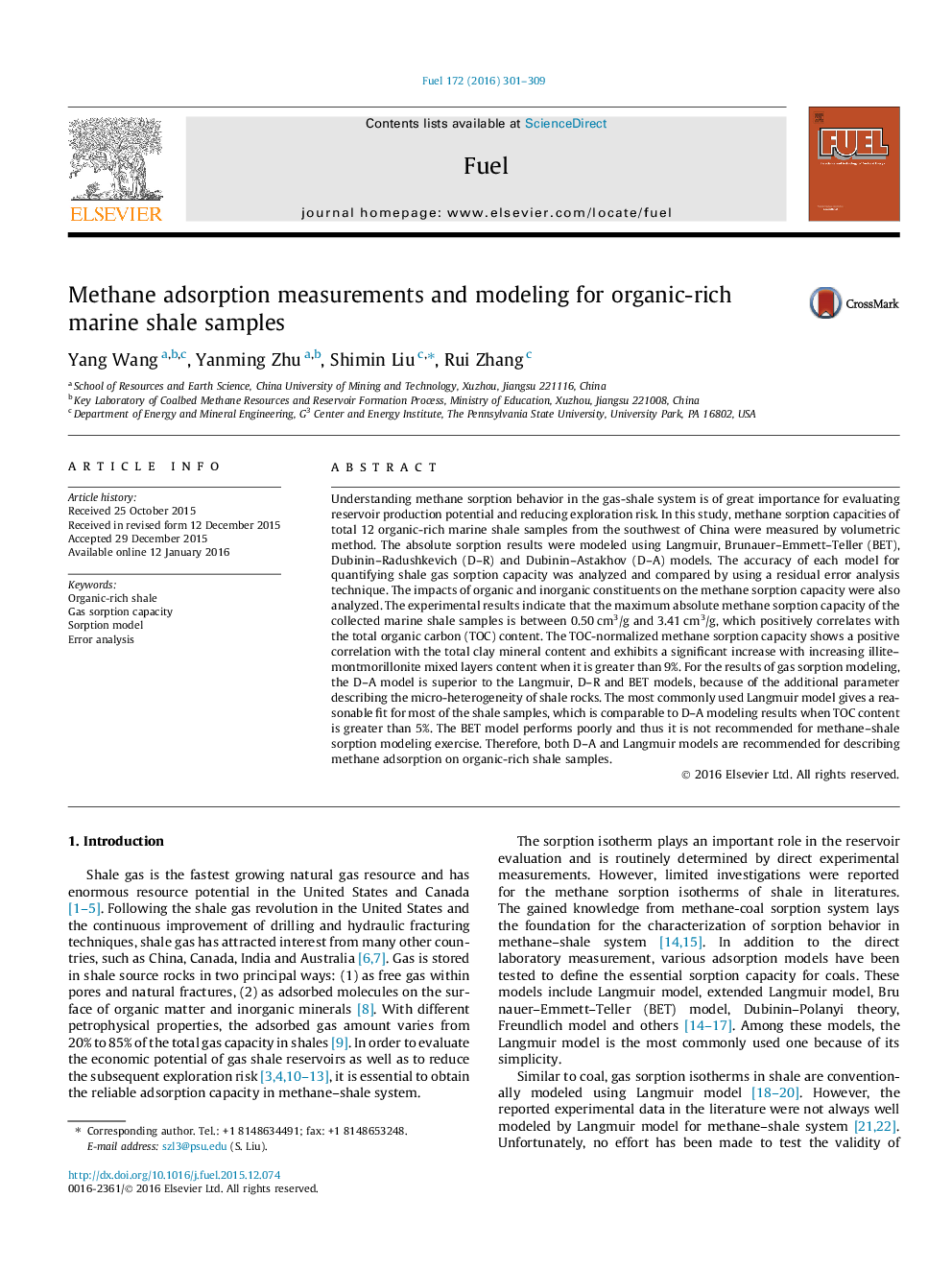| Article ID | Journal | Published Year | Pages | File Type |
|---|---|---|---|---|
| 205212 | Fuel | 2016 | 9 Pages |
Understanding methane sorption behavior in the gas-shale system is of great importance for evaluating reservoir production potential and reducing exploration risk. In this study, methane sorption capacities of total 12 organic-rich marine shale samples from the southwest of China were measured by volumetric method. The absolute sorption results were modeled using Langmuir, Brunauer–Emmett–Teller (BET), Dubinin–Radushkevich (D–R) and Dubinin–Astakhov (D–A) models. The accuracy of each model for quantifying shale gas sorption capacity was analyzed and compared by using a residual error analysis technique. The impacts of organic and inorganic constituents on the methane sorption capacity were also analyzed. The experimental results indicate that the maximum absolute methane sorption capacity of the collected marine shale samples is between 0.50 cm3/g and 3.41 cm3/g, which positively correlates with the total organic carbon (TOC) content. The TOC-normalized methane sorption capacity shows a positive correlation with the total clay mineral content and exhibits a significant increase with increasing illite–montmorillonite mixed layers content when it is greater than 9%. For the results of gas sorption modeling, the D–A model is superior to the Langmuir, D–R and BET models, because of the additional parameter describing the micro-heterogeneity of shale rocks. The most commonly used Langmuir model gives a reasonable fit for most of the shale samples, which is comparable to D–A modeling results when TOC content is greater than 5%. The BET model performs poorly and thus it is not recommended for methane–shale sorption modeling exercise. Therefore, both D–A and Langmuir models are recommended for describing methane adsorption on organic-rich shale samples.
